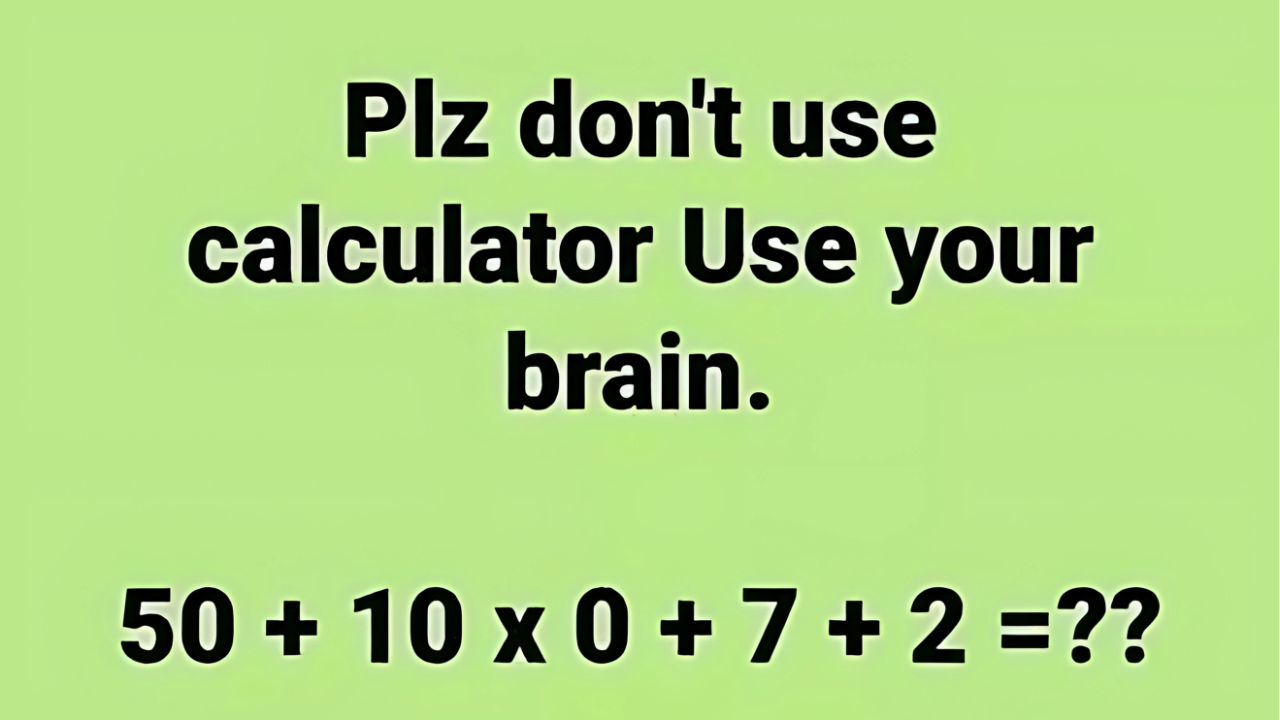Mathematics doesn’t always need fancy gadgets or complex tools to be fascinating. Sometimes, the most mind-boggling challenges come from simple number games that require nothing more than your brain power. These mathematical puzzles have been entertaining people for centuries, proving that mental arithmetic can be both fun and incredibly rewarding.
The beauty of calculator-free math puzzles lies in their ability to make us think differently. They force our minds to find creative solutions and discover patterns that aren’t immediately obvious. Whether you’re a student looking to sharpen your skills or an adult wanting to keep your mind active, these challenges offer the perfect mental workout.
The Magic Behind Number Pattern Puzzles
Pattern recognition forms the backbone of many mathematical brain teasers. These puzzles present sequences of numbers where you need to identify the hidden rule or formula. The satisfaction of cracking these codes without any digital assistance is truly unmatched.
Consider this simple example: 2, 4, 8, 16, ?. Most people can quickly identify that each number doubles the previous one, making the answer 32. However, advanced pattern puzzles can involve multiple operations, alternating sequences, or even geometric progressions that challenge even seasoned mathematicians.
Understanding Arithmetic Sequences
Arithmetic sequences follow a consistent addition pattern. If you see numbers like 5, 9, 13, 17, you’re looking at a sequence where each term increases by 4. These puzzles train your brain to recognize mathematical relationships quickly and efficiently.
The key to solving these puzzles lies in examining the differences between consecutive numbers. Sometimes the pattern isn’t in the numbers themselves but in how they change from one term to the next.
Geometric Progression Challenges
Unlike arithmetic sequences, geometric progressions involve multiplication or division. The sequence 3, 9, 27, 81 multiplies each term by 3. These puzzles often appear more challenging because the numbers grow rapidly, but the underlying principle remains straightforward.
Practice with these patterns helps develop logical thinking skills that extend far beyond mathematics. You start seeing relationships and connections in everyday situations, making you a better problem solver overall.
Visual Math Riddles That Trick Your Mind
Some of the most entertaining math puzzles combine numbers with visual elements. These challenges require you to interpret diagrams, shapes, or symbolic representations to find numerical answers. They’re particularly effective because they engage both your analytical and visual processing abilities.
Picture puzzles might show geometric shapes with numbers inside, asking you to determine the missing value. Others might use everyday objects like fruits or animals to represent different numbers, creating algebra-like equations that you solve through logical deduction.
Symbol Substitution Puzzles
These puzzles replace numbers with symbols, animals, or objects. You might see an equation like: Apple + Apple = 8, Banana + Apple = 11. From this, you can determine that Apple equals 4 and Banana equals 7. Symbol puzzles teach algebraic thinking without formal algebra notation.
The challenge intensifies when multiple symbols interact in complex ways. Advanced versions might include multiplication, division, or even exponential relationships between the symbols.
Grid-Based Number Games
Mathematical grid puzzles present numbers arranged in squares or rectangles with specific rules. Magic squares, where all rows, columns, and diagonals sum to the same total, represent one popular variation. These puzzles require systematic thinking and often multiple solution attempts.
Sudoku represents perhaps the most famous grid-based number puzzle, though it focuses more on logical placement than arithmetic calculation. However, many variations incorporate mathematical operations that must be performed without calculators.
Time-Based Mental Math Challenges
Speed mathematics puzzles test your ability to perform calculations quickly and accurately. These challenges often involve tricks and shortcuts that make complex arithmetic manageable without digital assistance. Learning these techniques can dramatically improve your everyday math skills.
For example, multiplying any number by 9 becomes easy when you know the trick: multiply by 10 and subtract the original number. To calculate 9 × 17, compute 170 – 17 = 153.
Calendar Math Tricks
One fascinating mental math demonstration involves calendar grids. Ask someone to circle any 3×3 block of dates on a calendar. You can instantly calculate the sum of all nine numbers by multiplying the center number by 9. This works because of the mathematical relationship between consecutive dates.
These tricks showcase how mathematical principles hide in unexpected places. Understanding the logic behind such shortcuts helps you develop intuitive number sense.
Fast Addition Techniques
Quick addition methods can make you seem like a human calculator. Adding sequences of numbers becomes easier when you group them strategically. For numbers ending in 5, you can pair them with numbers ending in 5 to create multiples of 10.
Practice these techniques regularly, and you’ll find yourself solving arithmetic problems much faster than people relying on calculators for simple operations.
Logic-Based Mathematical Reasoning
The most challenging math puzzles without calculators often involve pure logical reasoning rather than computational skills. These problems present scenarios where you must deduce numerical relationships through careful analysis and systematic thinking.
Consider age-related puzzles: “Two years ago, a father was three times as old as his son. In eight years, he’ll be twice as old. How old are they now?” Solving this requires setting up relationships and working through the logic step by step.
Coin and Counting Puzzles
Currency-based brain teasers often involve finding combinations of coins that satisfy specific conditions. These puzzles teach systematic problem-solving approaches and help develop organizational thinking skills. They’re practical too, as they relate to real-world situations involving money.
Advanced versions might involve multiple currencies or complex exchange rates that must be calculated mentally. These challenges combine mathematical skills with practical application.
Probability Without Calculations
Some mathematical riddles explore probability concepts through logical reasoning rather than formula application. Understanding likelihood and chance through intuitive thinking often proves more valuable than memorizing complex probability equations.
These puzzles help develop statistical thinking that applies to decision-making in daily life. You learn to evaluate situations and make informed choices based on mathematical principles.
Ancient Mathematical Puzzles
Many classic math challenges originated centuries ago and remain popular today. These puzzles have survived because they represent fundamental mathematical concepts in accessible, entertaining formats. Solving them connects you to generations of mathematical thinkers.
The Seven Bridges of Königsberg puzzle, though more geometric than arithmetic, exemplifies how mathematical problems can emerge from real-world situations. These historical challenges often contain deep mathematical insights disguised as simple games.
Number Theory Puzzles
Prime number challenges and divisibility puzzles explore the fundamental properties of integers. These problems might ask you to find patterns in prime distributions or identify numbers with specific divisibility characteristics.
Understanding these concepts helps develop mathematical intuition that extends to more advanced topics. You start recognizing numerical relationships that aren’t immediately obvious.
Geometric Number Patterns
Some puzzles combine geometric visualization with numerical relationships. Triangle numbers, square numbers, and other figurate numbers create visual patterns that correspond to specific mathematical sequences.
These challenges help bridge the gap between abstract numerical concepts and concrete visual understanding. They make mathematics more tangible and memorable.
Benefits of Calculator-Free Math Practice
Regular engagement with mental math puzzles provides numerous cognitive benefits. Your brain develops stronger numerical intuition, faster problem-solving abilities, and improved logical reasoning skills. These advantages extend far beyond mathematical contexts.
Mental arithmetic practice also builds confidence in mathematical abilities. When you can solve complex problems without external tools, you develop a sense of mathematical independence that encourages further learning and exploration.
Improved Cognitive Function
Brain training through math puzzles exercises multiple cognitive abilities simultaneously. Working memory, pattern recognition, logical reasoning, and numerical fluency all improve through regular practice with challenging mathematical problems.
Research suggests that individuals who regularly engage with mathematical challenges maintain sharper cognitive abilities as they age. The mental exercise provides protective benefits against cognitive decline.
Enhanced Problem-Solving Skills
The systematic thinking required for math puzzle solving transfers to other areas of life. You develop approaches for breaking down complex problems into manageable components and finding solutions through logical analysis.
These skills prove valuable in professional contexts, personal decision-making, and academic pursuits across various subjects. Mathematical thinking provides a foundation for clear, systematic reasoning.
Getting Started With Math Puzzles
Begin your mathematical puzzle journey with simple pattern recognition exercises. Work through basic arithmetic sequences and geometric progressions until you feel comfortable identifying common patterns. Gradually increase difficulty as your skills develop.
Set aside regular time for mental math practice. Even 10-15 minutes daily can significantly improve your numerical abilities and problem-solving confidence. Consistency matters more than lengthy practice sessions.
Finding Quality Puzzle Resources
Mathematical puzzle books and online resources provide structured progression through increasingly difficult challenges. Look for sources that explain solution methods and underlying mathematical principles, not just answer keys.
Join math puzzle communities where enthusiasts share interesting problems and solution techniques. Learning from others’ approaches expands your problem-solving toolkit and exposes you to new mathematical concepts.
Creating Your Own Challenges
Once you’ve mastered basic puzzle types, try creating your own mathematical challenges. This process deepens your understanding of underlying mathematical relationships and helps you recognize patterns more effectively.
Share your puzzles with friends, family, or online communities. Teaching others reinforces your own learning and contributes to the broader mathematical puzzle tradition.
Mathematical puzzles without calculators offer endless entertainment while building valuable cognitive skills. They prove that mathematics can be accessible, engaging, and deeply satisfying when approached with curiosity and persistence.
Frequently Asked Questions
What makes a math puzzle “mind-boggling”?
A mind-boggling math puzzle challenges your assumptions and requires creative thinking beyond standard arithmetic operations.
How can I improve my mental math skills?
Practice regularly with basic arithmetic, learn calculation shortcuts, and work through progressively difficult number puzzles.
Are there math puzzles suitable for children?
Yes, many visual and pattern-based puzzles work well for children and help develop early mathematical reasoning skills.
What’s the best way to approach a difficult math puzzle?
Start by identifying what information you have, look for patterns or relationships, and try different approaches systematically.
Can solving math puzzles really improve cognitive function?
Research suggests regular mental mathematical challenges can enhance working memory, logical reasoning, and problem-solving abilities.
How long should I spend trying to solve a puzzle before looking at the answer?
Give yourself at least 10-15 minutes of focused effort, but don’t hesitate to check solutions if you’re completely stuck to learn new techniques.

